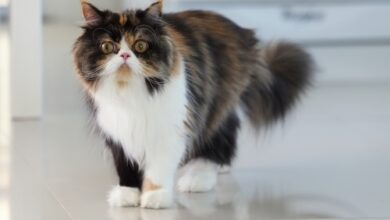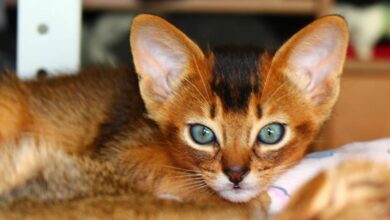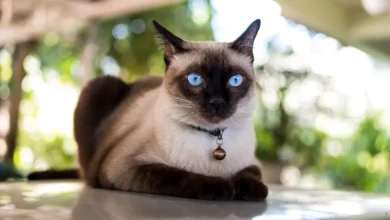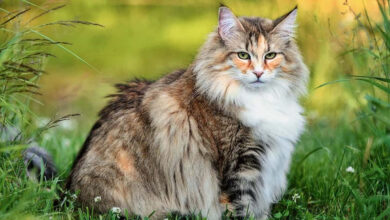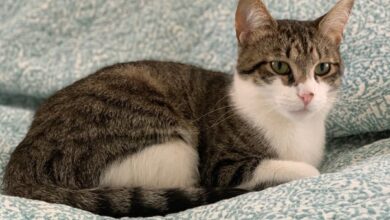Understanding the Importance of Cat Trees
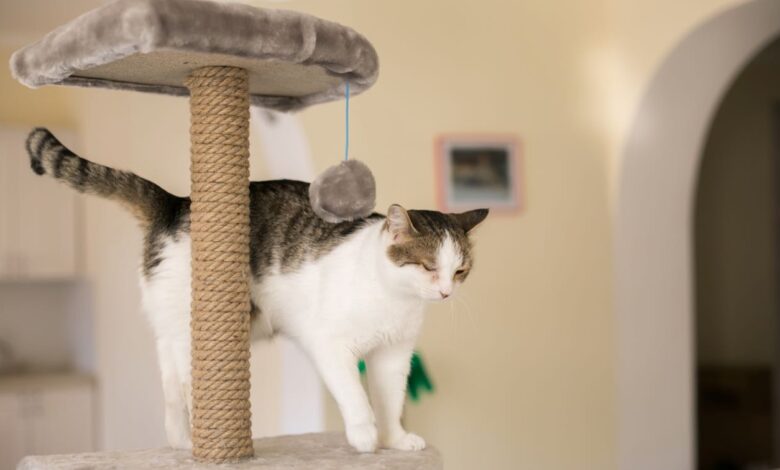
FAQs about Cat Trees
At What Age Can Kittens Use a Cat Tree?
Part of proper kitten development is introducing climbing, balance, and motor skills from an early age. Most veterinarians agree cat trees can be introduced to kittens once the following milestones are met:
- 8-10 weeks of age when fully vaccinated. This minimizes disease risks as immunity develops.
- Weaned from mother. No longer need milk solids or risk of falling from heights.
- Eyes fully open by 5-6 weeks. Kittens are now aware of their surroundings.
- Strong enough to climb and support weight on their own at 7-8 weeks. The limbs are coordinated enough.
Some owners start with a shorter adjustable baby cat tree to encourage exploring without fear of plummeting accidentally. Platform heights can be gradually built up as muscle strengthens. Stairs should always have rails.
Soft surfaces, scratching posts, or sisal scratch pads positioned near the bottom may entice initial interaction safely. Emphasis should remain on positive reinforcement rather than punishment for mistakes. With supervision, kitten cat trees can set them up for a lifetime of confident play!
Is a cat tree good for cats?
Yes, cat trees provide enormous physical and mental benefits for indoor cats when incorporated thoughtfully into the home environment. They satisfy natural instincts like scratching, climbing, and territory marking while also reducing stress, fostering entertainment, and enhancing the human-feline bond. Scientific studies show increased activity levels, better condition for joints, and reduced problem behaviors in cats with suitable cat furniture.
Where should I put my cat’s cat tree?
Ideally cat trees are placed in well-trafficked living areas like the lounge room or near windows where cats can observe birds and outdoor stimulation. This encourages bonding through visibility and activity during owners’ daily routines. Away from risks of tipping over appliances, and not directly in sunlight that may damage coverings over time. Cats also appreciate a strategic perch with line-of-sight over their resources like food, water, and litter trays.
Do indoor cats need a cat tree?
While indoor cats can live fulfilled lives without cat trees, they offer tremendous physical and psychological benefits that boost feline welfare. Scratching posts satisfy natural instincts indoors and prevent damage to household items. Vertical space and perching areas suit cats’ instinctive behaviors. Interactivity keeps cats cognitively engaged during solo time at home. Cat trees also combat boredom, stress and behavior issues that can stem from a lack of appropriate environmental stimulation if always confined inside. In almost all cases, the pros of incorporating thoughtful cat furniture outweigh the cons for pet parents and their homebound feline friends.
Do cat trees make cats happier?
Numerous studies and anecdotes from owners confirm cat trees enrich mental stimulation and emotional well-being compared to homes without. Higher perch areas inspire confidence in observing surroundings safely. Posts encourage natural scratching outlets versus household items. The toys attached provide interactive playtime. Having vertical space to climb and explore satisfies innate instincts in a species that naturally utilizes three dimensions. Research shows increased activity levels, reduced stress hormones, and improved muscle condition in cats with adequate cat furniture. While not a substitute for affectionate human interaction, cat trees create more complex “cat-centric” spaces indoors. This boosts comfort, confidence, and happiness when their owners are away. Overall, incorporating thoughtfully chosen cat trees absolutely enhances the quality of life for indoor felines.
Cat Tree Sizes and Prices to Consider
There is a wide range of dimensions and price points depending on your cats’ needs and budget. Here are some common tree sizes with approximate local price ranges:
Small (1-1.5m tall)
- Suitable for 1 small cat or kitten
- $80-$150
Medium (1.5-2m tall)
- For 1-2 cats, including larger breeds
- $150-$300
Large (2-2.5m tall)
- Ideal for multi-cat homes or extra large felines
- $300-$500
Extra large (2.5m+)
- Sizable for 3+ cats or those desiring height
- $500-$800
Additional factors like sturdy construction materials, inclusion of extras like hammocks or toys may increase costs. Online deliveries often offer better deals than pet stores too. Look out for sales during holiday periods.
Overall, be ready to invest over $150 for serious cat furniture providing years of safe enjoyment and therapeutic benefits. Cats are a long term commitment, so quality items built to last are worth consideration for their health and happiness.
Cats are beloved pets for many Australian households. While cats enjoy exploring outdoors, most felines today spend large portions of their time indoors. As clever, active animals, cats need stimulating indoor spaces to play, scratch, climb, and observe their human companions from high places. That’s where cat trees can make a huge positive impact in any home with cats.
The Benefits of Cat Trees
Active cats need toys, scratching posts, and climbing spots to stay physically and mentally stimulated. Cat trees elegantly combine all these functions into one piece of furniture. They provide:
Scratching areas
Cats have a natural instinct to scratch to condition their claws and mark territory with scent glands in their paws. By directing scratching to approved surfaces like sisal-wrapped posts, cat trees help satisfy this drive in acceptable ways indoors. This can prevent damage to household furniture.
Perching spaces
Many cats feel most secure when they can observe their environment from an elevated vantage point. Cat trees offer multiple platforms at different heights for cats to relax, watch bird activity outside, or keep an eye on family members indoors.
Entertainment value
The posts and platforms enable natural climbing behavior. Plus, toys can be attached to provide interactive play. This keeps cats mentally and physically engaged when owners are busy.
environmental enrichment
By adding vertical space, hiding spots, and activity areas, cat trees turn a room into a more “cat-friendly” indoor habitat. This reduces stress that can stem from a lack of stimulation or space in some homes.
When set up in a main living area, cat trees essentially put pet parents and their furry friends on the “same level.” This facilitates quality bonding time and visibility for all. Given their wide-ranging perks, cat trees are hugely valuable furnishings for any household with indoor cats.
Choosing the Best Cat Tree for Small and Large Cats
With so many options available, selecting the right cat tree requires considering your specific pets and home environment. Let’s explore two important factors:
Size of cats
It’s crucial to choose a size proportionate to your cats. Smaller felines may feel intimidated scaling an extra-large tree. Larger cats require sturdier, wider platforms to comfortably sprawl out on.
For most single small cats under 5kg, a tree 1-1.5m tall usually suffices. For 2-3 small cats or larger breeds, aim for 1.5-2m in height. Extra large and senior cats may prefer 2m or taller for joints.
Number of cats
If sharing the space, consider how many cats can play together comfortably. Trees with multiple tall posts let multiple cats perch separately. Wider bases accommodate more cats scratching at once. Additional sisal posts create scratching fairness between furry roommates!
Some great options for both small and large felines include:
- Go Pet Club Cat Tree – Sturdy, affordable design up to 2.2m. Multiple platforms, scratching posts.
- FroliCat Forest Cat Tree – Encourages exploration with bridges, and hammocks. Up to 2.4m.
- Iris Ohyama Cat Tree‘S – Stylish, stable trees from 1.5-2.5m plus a range of extras.
By accounting for size variations in your furry family, you can invest in a cat tree everyone feels welcome using for years to come.
Best Cat Tree for Used vs New
While new cat trees offer known quality and full warranties, second-hand options present value if well-maintained. Here are some factors to weigh:
Construction integrity
Inspect used trees thoroughly for loose screws, cracked/broken platforms or posts, and rickety stairs. Strong, solid builds endure rough play over time.
Cleanliness
Cat trees can accumulate dander, urine, and scratches even if regularly cleaned by previous owners. Consider re-sanding sisal posts or replacing covers if integrity is questionable.
Age appropriateness
Seek trees still sturdy for climbing, and scratching, and a cat’s size. Senior cats may desire lower, simpler designs. Assess wear from previous use.
Price difference
Significant savings could make a used purchase worthwhile if construction is sound. Account for potential repair costs down the road however.
Sanitation assurance
It’s difficult to fully sanitize used items. Consider placement away from food/water if unsure of prior cleanliness standards.
In general, used trees from trusted pet-owning families present a good eco-friendly option if well-maintained. But for long-term needs and stricter sanitation standards, new constructions ensure quality fit for purpose. Do thorough assessment case-by-case.
